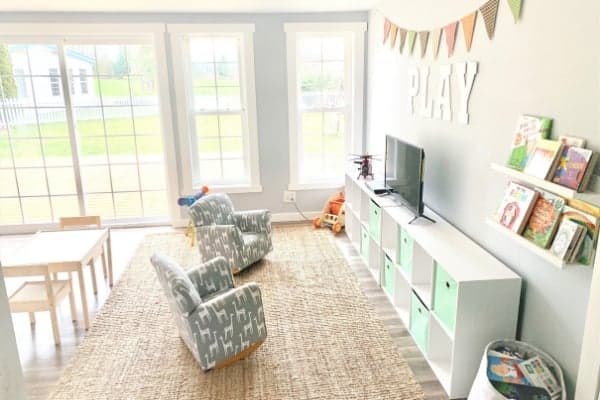Many homeowners are familiar with drafty rooms or inconsistent indoor temperatures, but few stop to consider that the root of these issues may lie directly overhead. The attic, often an overlooked part of the home, plays a critical role in maintaining indoor comfort and energy efficiency. When problems arise in this space, especially during seasonal extremes, they can have a subtle yet significant impact on the entire living environment. One such issue is cold attic syndrome, a condition that, while not always obvious, can have lasting effects on your home’s comfort, utility costs, and structural integrity. Understanding what cold attic syndrome is and how to recognize and address it can make a world of difference in maintaining a healthier, more efficient home.
What Is Cold Attic Syndrome?
Hidden above your living space, cold attic syndrome is an issue affecting more homes than most people realize. This problem occurs when attic spaces are unable to maintain a temperature similar to that of the living areas below, especially during extreme weather conditions. While it may appear insignificant at first, the consequences can ripple throughout the entire house, causing discomfort, increased energy bills, and even property damage. Cold attic syndrome often goes undiagnosed because its symptoms mimic those of other common household issues. Still, it can have a significant impact on your home’s energy efficiency and the comfort of its residents. If your family members are constantly reaching for extra blankets in winter or if your heating system seems to work overtime with little effect, your attic may be to blame. Seeking help from a cold attic syndrome specialist is a wise move if you find yourself facing persistent, unexplained heating and cooling challenges.
Although the name implies a winter-centric issue, cold attic syndrome doesn’t simply disappear when spring arrives. In warm months, attics with poor insulation and inadequate airflow can become heat traps, resulting in stifling air and placing extra stress on your cooling systems. The problems associated with cold attic syndrome can range from inconvenient to costly, including chronic drafts, sudden cold spots, and drastic temperature fluctuations between floors. Many homeowners attribute these discomforts to outdated windows or underpowered furnaces, but the real culprit might sit just overhead. Recognizing the unique role your attic plays is crucial for identifying and addressing the root cause of these issues.
Common Symptoms of Cold Attic Syndrome
- Chilly and drafty upper floors: An attic that’s colder than the rest of your house can drain warmth away from rooms below, making them feel perpetually colder than other areas.
- Heating systems running excessively: Even when your furnace is set to a comfortable temperature, it may have to work overtime to compensate for heat escaping through an under-insulated or poorly sealed attic.
- Increasing energy bills: One of the first financial warning signs, unexpected spikes in your utility bills often indicate heat loss occurring somewhere you might not expect, such as the attic above.
- Ceiling stains and dampness: When condensation forms or leaks develop, water stains or musty odors on ceilings can indicate an attic that’s not keeping outdoor elements or temperature extremes at bay.
- Ice dams in winter: During freezing weather, warm air escaping into the attic can cause uneven melting of roof snow. The runoff refreezes at the edges, creating hazardous ice dams and resulting in water damage.
- Stuffy, overheated attic in summer: While cold is the focus in winter, extreme attic heat can cause a host of secondary problems, from warped wood to increased strain on air conditioning systems.
Too often, these symptoms go unnoticed or are misattributed to other parts of the home. Homeowners may add space heaters or replace windows, not realizing these are only temporary solutions. Paying attention to these red flags is crucial because catching cold attic syndrome early translates into more straightforward and less expensive fixes.
Why Proper Attic Insulation Matters
The primary defense against cold attic syndrome is robust, well-installed insulation. Good attic insulation acts as a barrier against unwanted heat flow, keeping warm air inside during cold months and preventing heat from escaping during summer. Without it, the attic becomes a bridge for temperature extremes to seep into living areas, undermining comfort and inflating energy use. The U.S. Department of Energy highlights the attic as a crucial area for insulation improvements, emphasizing that heat rises and can escape through the roof if not adequately contained. Their research shows that proper insulation helps maintain steady indoor temperatures, reduces strain on HVAC systems, and prevents airborne pollutants and allergens from entering the home.
There’s a broad spectrum of insulation types and installation methods, and not all deliver equal performance. The climate where you live determines the recommended R-value—or insulation effectiveness—you should use. Adding just a few inches of the correct type of insulation can significantly reduce heat flow, lower energy costs, and provide substantial improvements in comfort. Equally important is ensuring there are no overlooked air gaps around plumbing, wiring, and ductwork, where warm air can escape into the attic.
Identifying Cold Attic Syndrome in Your Home
Step-by-Step Self-Assessment
- Compare temperature differences between each floor, focusing on rooms adjacent to the attic, to catch sudden drops or spikes.
- Visually inspect the attic insulation—if it appears patchy, thin, or uneven, it may be time for an upgrade.
- Check for moisture issues, such as damp wood or white frost, during the winter.
- Feel for noticeable drafts near attic hatches or in rooms closest to the attic space.
- Track your energy bills for unusual changes, particularly during seasonal transitions.
Some comfort-seeking DIYers may feel confident performing these checks, but when the results are inconclusive or symptoms persist, consulting professionals is key. Specialists often use heat-mapping tools and detailed airflow tests to pinpoint where changes are needed most, eliminating the guesswork from the process and ensuring your solutions are targeted and effective.
Consequences of Ignoring Cold Attic Syndrome
Neglecting cold attic syndrome can result in steep costs, financial and otherwise. Persistent heat loss drives up energy expenses, putting extra burden on heating and cooling systems and causing unnecessary wear. There are also structural concerns: as heat escapes into the attic, it can melt roof snow in winter, which then refreezes at the eaves, creating ice dams. These dams prevent proper drainage, leading to water seeping beneath roofing materials and causing rot, mold, or even interior leaks.
Chronic attic dampness is another primary concern. Poor insulation and persistent condensation directly contribute to mold growth and degradation of wood and insulation. According to the EPA’s guide on mold, moisture, and your home, controlling moisture is critical to preventing mold, which can compromise both building materials and indoor air quality. This hidden mold not only affects the house’s structure but can also seriously impact indoor air quality, posing health risks, especially to those with respiratory conditions. Ultimately, ignoring cold attic syndrome shifts the problem from a manageable upgrade to expensive restoration work.
Effective Remedies for Cold Attic Syndrome
- Upgrade Insulation: Consider adding high R-value batts or blown-in insulation if your current coverage is inadequate. Tailoring insulation type to the climate and attic shape is critical for achieving the best results.
- Seal Air Leaks: Unnoticed gaps around hatches, ducts, and electrical conduits can account for significant heat loss. Sealing these cracks with caulk or spray foam keeps conditioned air where it belongs.
- Improve Ventilation: Installing ridge, soffit, or gable vents promotes necessary airflow, balancing attic humidity and temperature. This process also helps prevent mold and ice damming.
- Manage Moisture: Installing vapor barriers or utilizing attic-specific dehumidifiers helps reduce moisture and prevent condensation-driven damage.
Remedy selection should be based on a professional assessment, the age and location of the property, and the current condition of the insulation. Prioritize investments that yield both immediate comfort and lasting savings, as some solutions—like added insulation—quickly pay for themselves in lower utility costs.
Advanced Techniques and New Technologies
Modern homeowners have more tools than ever to battle cold attic syndrome. Upgraded insulation materials, such as dense-packed cellulose and closed-cell spray foam, fill tiny voids and deliver unparalleled thermal performance. Radiant barriers installed beneath roof decking further reflect heat and bolster energy retention. Smart attic fans and automated venting systems can now control airflow based on humidity or temperature, improving comfort while reducing energy waste.
There has also been a push toward environmentally friendly solutions, including insulation made from recycled content and solar-powered attic fans. These technologies not only boost efficiency but also reduce a home’s carbon footprint, appealing to both budget- and eco-conscious homeowners.
Preparing Your Attic for All Seasons
Regular attic maintenance is your home’s best insurance policy. Reacting to problems as they arise is costly; instead, proactive upkeep keeps minor issues from mushrooming into severe damage. Every spring and fall, inspect your attic for insulation settling, blocked vents, moisture intrusion, or new drafts.
- Review insulation condition and reposition any batting that has shifted out of place.
- Scrutinize for signs of water damage or attic pests, which can undermine insulation effectiveness and lead to other home issues.
- Test all ventilation systems to ensure air is circulating and humidity remains in check.
- Arrange for professional inspections every few years to facilitate advanced diagnostics and solutions.
- Seal attic entrances and hatches during off-seasons for maximum energy conservation.
By investing a little time and care throughout the year, you’ll keep your home comfortable, reduce energy waste, and prevent cold attic syndrome from returning.





